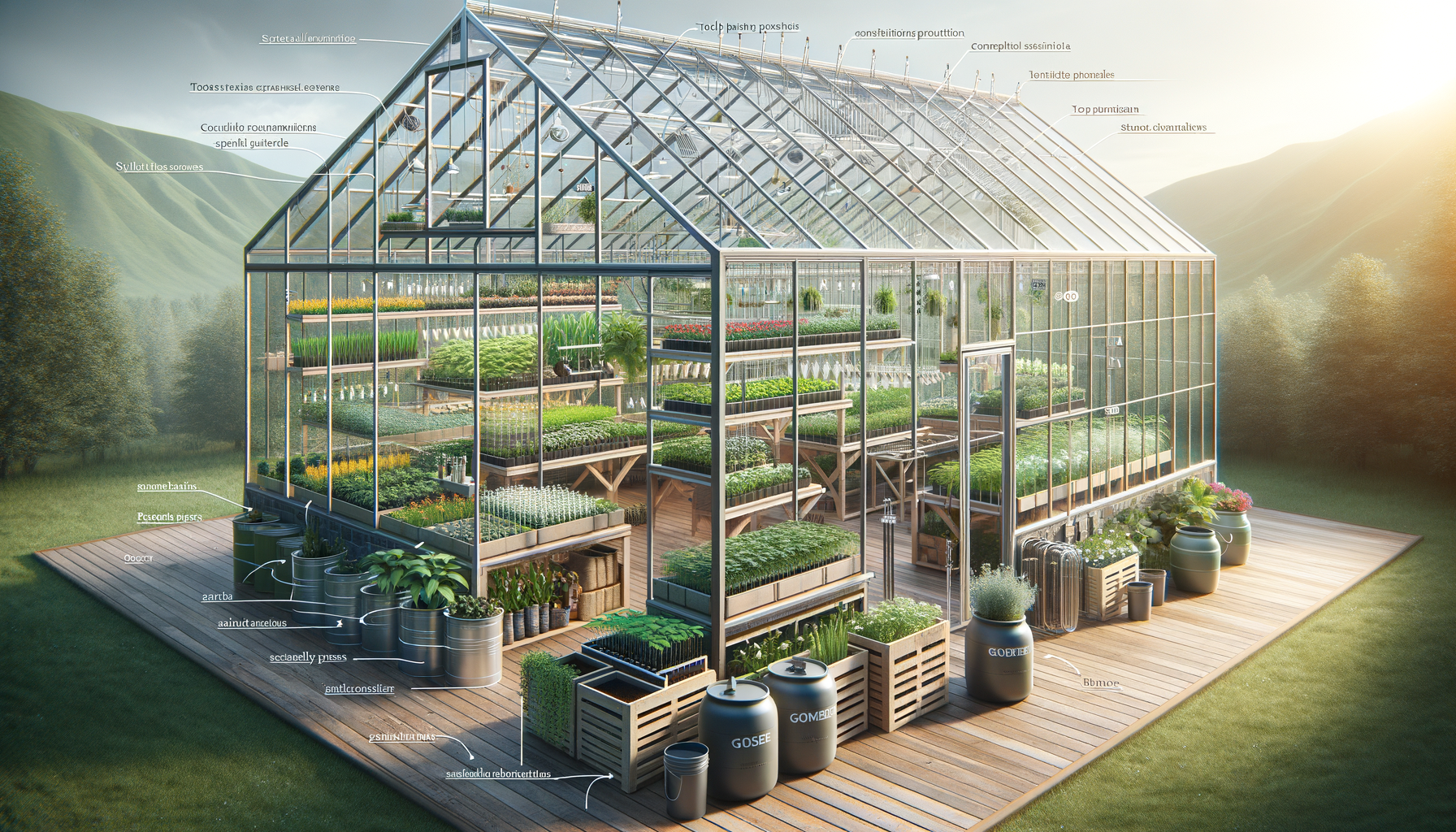
How to Organize a Greenhouse: 10 Practical Tips and Material Considerations
Introduction to Greenhouse Organization
In the world of gardening, a greenhouse serves as a sanctuary for plants, offering a controlled environment that promotes growth and prolongs the growing season. However, the true potential of a greenhouse is unlocked through effective organization and strategic planning. Whether you’re a seasoned gardener or a novice, understanding how to organize a greenhouse can maximize productivity and ensure a thriving plant ecosystem.
The importance of organization in a greenhouse cannot be overstated. With limited space, every square inch must be utilized efficiently to accommodate various plants, tools, and materials. Proper organization not only enhances plant health but also simplifies maintenance tasks, making gardening a more enjoyable and rewarding experience.
This article delves into practical tips and material considerations for organizing a greenhouse. From layout planning to choosing the right materials, these insights will guide you in creating a well-structured and productive greenhouse environment.
Planning the Greenhouse Layout
The first step in organizing a greenhouse is to plan its layout. A well-thought-out layout ensures that plants receive adequate sunlight, ventilation, and space to grow. Begin by categorizing plants based on their light and temperature requirements. Grouping plants with similar needs together makes it easier to manage their environment.
Consider the following when planning your greenhouse layout:
- Sunlight Access: Position taller plants towards the back or sides to prevent them from shading shorter plants.
- Ventilation: Ensure air can circulate freely by leaving space between plants and installing vents or fans.
- Pathways: Create clear pathways to access all areas of the greenhouse without disturbing plants.
Additionally, think about the placement of workbenches and storage areas. These should be easily accessible but not obstructive to plant growth. By carefully planning the layout, you can create a harmonious balance between functionality and aesthetics.
Choosing the Right Materials
The materials used in a greenhouse play a crucial role in its functionality and durability. When selecting materials, consider factors such as climate, budget, and the types of plants you intend to grow. Here are some key material considerations:
- Frame: The frame should be sturdy and resistant to weather conditions. Common materials include aluminum, wood, and galvanized steel.
- Glazing: The choice of glazing affects light transmission and insulation. Options include glass, polycarbonate, and polyethylene film.
- Flooring: Durable and easy-to-clean flooring materials such as concrete or gravel are recommended for high-traffic areas.
Each material has its advantages and disadvantages, so it’s important to weigh these against your specific needs. For instance, while glass offers excellent light transmission, polycarbonate is more impact-resistant and provides better insulation. By choosing the right materials, you can enhance the greenhouse’s efficiency and longevity.
Implementing Efficient Storage Solutions
Efficient storage solutions are essential for maintaining an organized greenhouse. With the right storage systems in place, you can keep tools, seeds, and supplies neatly arranged and easily accessible. Consider the following storage tips:
- Shelving Units: Install adjustable shelving to accommodate plants of varying heights and to store pots and gardening tools.
- Tool Racks: Use wall-mounted racks to hang tools, keeping them off the floor and within reach.
- Containers and Bins: Label and organize containers for seeds, fertilizers, and other small items to prevent clutter.
Incorporating vertical storage solutions can also help maximize space. Hanging baskets or tiered plant stands allow you to utilize overhead space without compromising the ground area. By implementing these storage strategies, you can maintain a tidy and efficient greenhouse environment.
Maintaining an Organized Greenhouse
Organizing a greenhouse is not a one-time task but an ongoing process. Regular maintenance is key to sustaining an organized and productive environment. Establish a routine for cleaning and organizing to prevent the accumulation of clutter and ensure the health of your plants.
Here are some maintenance tips to keep your greenhouse in top condition:
- Regular Cleaning: Clean surfaces, tools, and containers to prevent the spread of pests and diseases.
- Inventory Management: Keep track of supplies and replenish them as needed to avoid running out of essential items.
- Seasonal Adjustments: Rearrange plants and adjust environmental controls to accommodate seasonal changes.
By staying proactive and attentive to the needs of your greenhouse, you can create a thriving plant environment that is both organized and efficient. Regular maintenance not only enhances plant health but also makes gardening a more enjoyable and rewarding experience.
Conclusion: Creating a Productive Greenhouse
Organizing a greenhouse is an art that combines creativity with practicality. By carefully planning the layout, selecting appropriate materials, and implementing efficient storage solutions, you can transform your greenhouse into a productive haven for plants. Regular maintenance ensures that the environment remains conducive to growth, allowing you to enjoy the fruits of your labor year-round.
Whether you’re growing vegetables, flowers, or exotic plants, a well-organized greenhouse provides the ideal setting for nurturing your green thumb. Embrace the process, experiment with different arrangements, and watch as your greenhouse flourishes into a vibrant oasis of life.